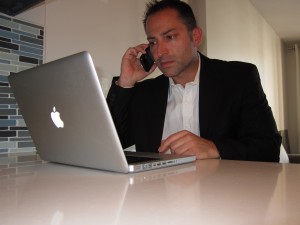Creating prudent investor safeguards is an important part of enabling a vibrant and effective crowd fund investing ecosystem. With this in mind, we propose a series of steps to increase transparency and accountability while limiting the opportunity for fraud and abuse.
How to Provide Investor Protection in Crowd Fund Investing
Creating prudent investor safeguards is an important part of enabling a vibrant and effective crowd fund investing ecosystem. With this in mind, we propose a series of steps to increase transparency and accountability while limiting the opportunity for fraud and abuse.
| Investor Risk | Proposed Rules to Mitigate Investor Risk |
| How do you prevent large scale fraud? | Limit the maximum amount any one entrepreneur/company can raise via crowd fund investing platforms to an aggregate of $1 million |
| How do you keep large corporations from using this as a loophole for cheaper financing? | Limit the types of companies that can utilize the platform to those that are less than 50 employees (and not a majority owned or wholly owned subsidiary of another entity) with less than $5 million in revenue in the previous calendar year |
| How do you prevent someone from swindling all of Grandma’s retirement? | Limit the amount that anyone can invest to either $10,000 or 10% of their prior year’s Adjusted Gross Income (whichever is lower) |
| How do you prevent limited disclosure requirements from increasing risk? | Have the crowd vet the entrepreneur. Create a standards based set of data that each entrepreneur must complete in order to attempt to seek funding. Then enable a communication channel for investors and entrepreneurs to communicate about their questions, ideas and solutions. Investors only invest in entrepreneurs that have complete information and a product or service that the investor believes in. Connecting this service to social media groups whereby the entrepreneur and investors are part of the same group, the investors can ask questions of the entrepreneur and the entrepreneur can solicit the investors for help, experience, contacts, etc. Investors can rate the entrepreneur following their investment and entrepreneurs can rate investors. |
| How do you protect against professional scam artists? | Just like when financing a major purchase or renting an apartment, Crowd Fund Investing entrepreneurs must agree to credit checks that match their name, social security number and receive a credit score that the crowd can view. Make the initial money loans that the entrepreneur is personally responsible for. If he/she defaults it appears on their credit report. |
| How do you prevent someone from attempting to raise funds without proper planning? | Crowd Fund Investing must be an all or nothing platform. If the entrepreneur doesn’t raise all the requested funds within the specified timeframe, the funding round closes and the investors keep their money. By limiting the amount of money individuals can contribute, an entrepreneur has to be careful about how much money he is asking for (if he asks for too much and doesn’t reach his funding target, he doesn’t get funded). |
| What about nondisclosure/lack of transparency? | Make the entrepreneurs fill out standards based information about themselves and how they will use the capital. Have them attach links to their “social proof†from various online communities (LinkedIn, eBay, Amazon, Facebook, etc) profiles that show how the “crowd†views them. Most of these investments will be made to individuals that are already known to the investors via social media platforms.  Investors will be provided with standards based agreements and this information will be stored within the community, and a data set of relevant investor and entrepreneur data will be transferred to the SEC on a quarterly basis. Examples of this dataset might include: company name, entrepreneur name, funding rounds attempted, funding rounds successful, number of investors, total investment raised, investor names, etc. |
| How do you prevent people from “underwriting†& “reselling†the securities? | Restrict the shares and mandate that shares must be held a minimum of 1 year by the acquirer. Let people know that they are buying restricted shares and there is no secondary market to them. Make sure they understand that unless the company is sold, merges or goes public they will not see a return. (Shares can be transferred to family) |





